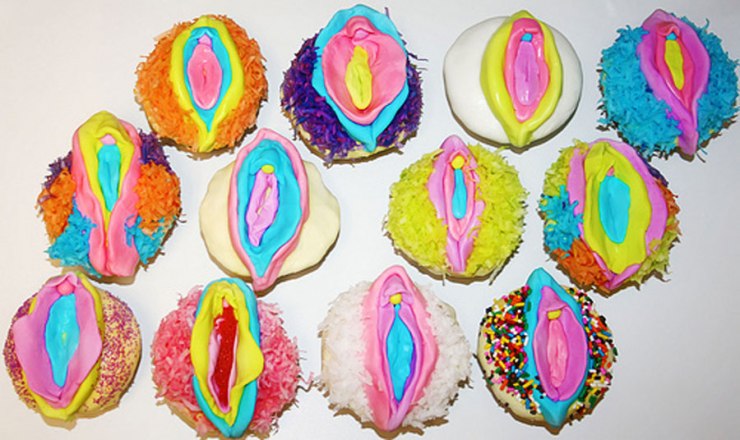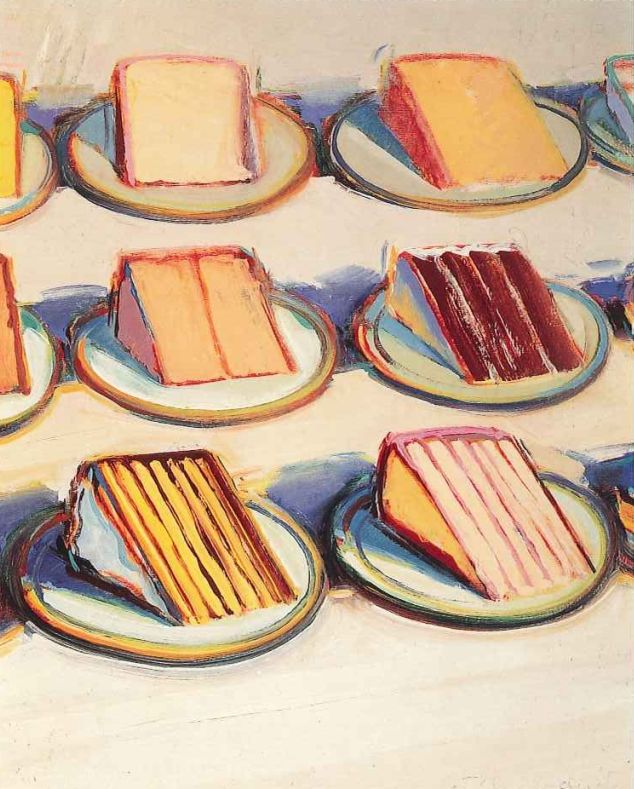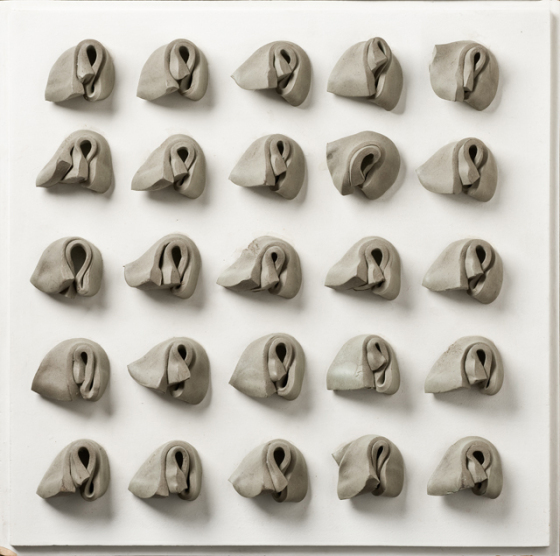
There’s a story gone viral about a parent who brought “vagina cookies” to her second grade child’s class, uh, in order to help teach students about the beauty of nature as embodied in the female privates. To the woman’s shock and dismay, the teacher refused to serve them. As a teacher myself, I’m completely on the side of the teacher. I could give you all the reasons why, but I think they are glaringly obvious, and it has nothing really to do with why I am sharing this story.
What struck me about the cookies was, well, that they apparently weren’t intended as art (unless everyone is being pranked). And what still surprises me about that is the difficulty I have in NOT seeing them as art. These cookies would satisfy graduate thesis requirements in art programs around the world, so long as the artist in question could write a companion essay validating them. They could be hung on the wall, showcased individually on pedestals, or set out just they way they are in the picture in a rough trapezoid.
In a gallery setting people would admire them, snort, chuckle, guffaw, and nod appreciatively. They would point out that the vaginas were actually luminously beautiful, transcendent even. They’d share which was their favorite, and puzzle over the deeper meaning and implications. They’d notice that they suggested multiculturalism, and women’s choices as regards glabrous or hirsute grooming. They might surmise that they are an homage-slash-investigation of the lush, pastry paintings of Wayne Thiebaud, combined with the theoretical redefining of the female by Hanna Wilke.


Art patrons would eventually dutifully make their way to the adjacent placard on the wall to read the artist’s statement, which would read something like this:
You eat what you are what you eat. A celebration of women’s bodies, and a reclaiming of baking as a joy that women need not forsake in order to be feminists. These delicious pastries, by artist Kristine Mullins, subtly undermine pejoratives attached to traditional womens’ work in and through the knowing hypostatization of the concept of “female” into the cooked objects themselves. Subversively parodic, the culinary sculptures both critique assigned gender roles while allowing women to express themselves in their own way through whichever medium they choose. Once seen these works are unforgettable and a testament to the beauty and variety of the female body, as distinct from how it has been historically viewed through the male gaze, and as sculpted and presented by a woman herself…
I find that I enter a state where, since the everyday object is considered as art when it is recontextualized in the art context, I sometimes find it difficult to see the everyday object as NOT art even when it is outside of the gallery/museum context. For example, once I learned to appreciate a bottle rack displayed as art by Marcel Duchamp, I saw all similar bottle racks as art whether they were signed by him or not.


There should be a name for this confusion/condition. The thing that comes to mind when I look for an analogy is the run-up to the first George W. Bush presidency, when after debates in which Al Gore demolished him, newsmen would nevertheless assert that Bush “looked presidential”. After being exposed to several such comparisons, when I thought of the word “presidential” an image of a smirking Bush would appear in my mind.
I just went to use the bathroom, and I found that if I looked at my green, plastic, bathroom floor mat as art, it became art. I could envision it on the wall of a gallery, and imagine people (including myself) feeling “challenged” by it, and being impressed by its physical creation. What happens subconsciously is that one compares it to a traditional sort of painting, and no matter how good the painting is we might imagine that we could make something like it ourselves. However, we couldn’t ourselves make a plastic bath matt with a raised pattern of two feet, and suction cups on the back. Once one begins to see objects in this way, anything and everything becomes art, and automatically superior to traditional art that is done by hand.
After making the mental leap of seeing a urinal, comb, snow shovel, or even a chrome replica of a balloon dog as art, how can art be distinguished from non-art? Why is my toilet not art if Duchamp’s urinal is? I look at a lamp and see sublime innocuousness. Absolute indifference becomes infinite wisdom, because when there is no individual artist fashioning something, than the universe is the artist. The juxtaposition of my sunglasses, a glass of water, my cell phone, and a kneaded ball of blue putty on my desk become a perfect composition because entirely unintentional, and thus free of artifice. In comparison, even readymades (found objects) displayed in the museum become overly contextualized and contrived.
Is it really possible to look at Duchamp’s urinal as high art, and then go piss in a urinal in the restroom of the museum it’s housed in, and not look at that urinal as art as well? It seems rather plausible that one might ignore Duchamp’s urinal, placed on a pedestal and enclosed in glass, and instead gain greater insight by admiring any of the fixtures in the museum toilet.
The more I look at the vagina cookies, not only do they look more like contemporary art, they look more like serious art. It’s like a self-hypnosis, which once kickstarted is difficult to shake. And I wonder if that’s all that is happening when we stand in awe in front of a pure white painting, a high-polished chrome balloon dog, or some other masterpiece of contemporary art. Does anyone else have this same sort of confusion (or is it clarity)?
~ Ends



Me, I don’t know about all this. I just initially thought, Finally, someone has done some bright colorful, popping art work. But, I guess they’re just cookies. I like them as art.
LikeLike
The problem with conceptual art is…art is whatever you want it to be. Now, this sounds liberating and all that good stuff, but unfortunately it is being taken more seriously than REAL art. I’m all for seeing beauty, finding beauty, being challenged, but I think you hit upon something really interesting. What is the word for when you think it’s art, but it’s not art? because the art community has been brainwashed into thinking ready mades as high art. Schmart? Punk art? “Not for sale”?
LikeLike
Yap. That about sums it up.
LikeLiked by 1 person
I can’t begin to untangle this debate (if the art community can’t…) but it does underline the collaborative nature of art. There is the creator of the work, then there are the people validating that creator as an artist, and the work as an art piece.
LikeLike